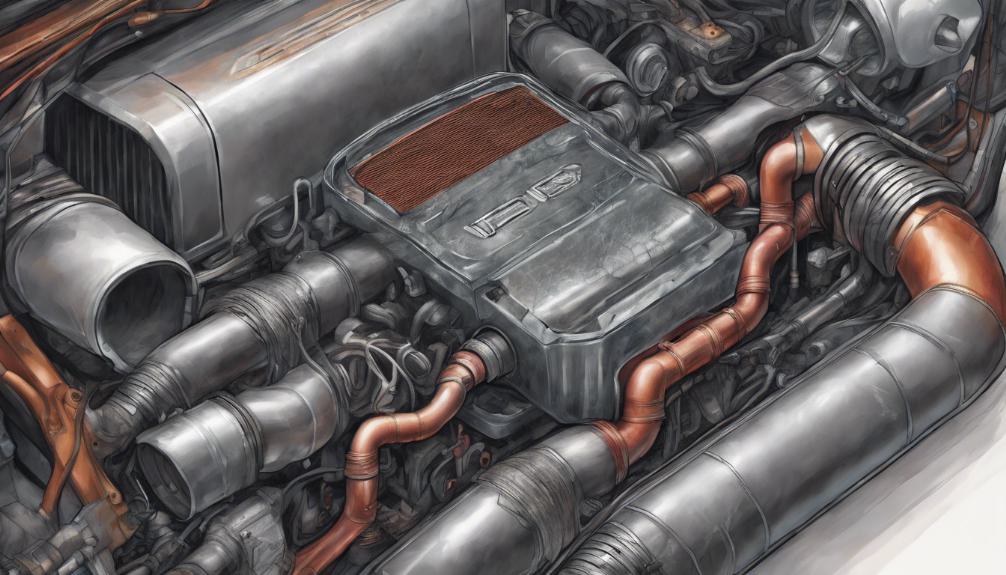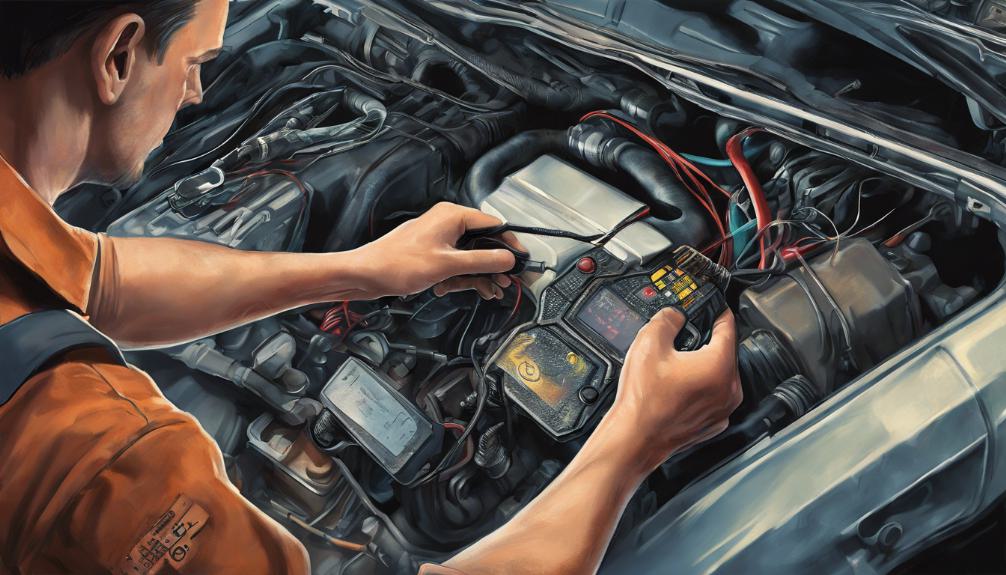Experiencing the P2202 Code due to a low NOx sensor circuit on Bank 1 demands thorough troubleshooting. Guarantee sensor calibration accuracy as voltage fluctuations can trigger this issue.
Dirt on sensor pickups or internal ECM problems may cause voltage issues. Proper calibration prevents false readings. The importance includes emissions and performance impact, affecting engine operation.
Early detection of symptoms and prompt electrical fault attention are essential. Common causes include sensor defects, wiring issues, or ECM malfunctions.
Troubleshooting involves verifying sensor connections, cleaning sensor pickups, and addressing low voltage problems. Understanding related DTC discussions can provide additional insights for resolution.
Key Takeaways
- Confirm sensor calibration post-replacement to ensure accuracy.
- Check wiring harness for any damages or faults affecting sensor readings.
- Remove dirt or debris on the NOx sensor to prevent false readings.
- Verify secure connections between the sensor and the system.
- Address any low voltage issues that might trigger the P2202 code.
Technical Description of P2202 Code

When diagnosing the P2202 code, it’s important to grasp the technical aspects of this issue. The sensor calibration is a critical factor in the proper functioning of the NOx sensor.
Calibration guarantees that the sensor accurately measures the nitrogen oxide levels in the exhaust system.
Voltage fluctuations can lead to the triggering of the P2202 code. These fluctuations may be caused by issues such as dirty sensor pickups, damaged wiring, or internal ECM problems.
Proper calibration of the sensor is essential to prevent false readings that can result in the P2202 code being generated.
Voltage fluctuations, if not addressed, can disrupt the sensor’s ability to provide accurate data to the engine control module, leading to performance issues and potential emissions problems.
Understanding and addressing sensor calibration and voltage fluctuations are key steps in resolving the P2202 code effectively.
Severity and Symptoms of P2202 DTC
The severity and symptoms of the P2202 DTC can vary, impacting emissions and causing issues such as a check engine light, erratic idle, and increased emissions.
- Impact of P2202 severity on emissions, performance: P2202 can lead to increased emissions, affecting the vehicle’s environmental impact and overall performance.
- Recognizing symptoms of P2202 for early detection: Being alert to signs like a check engine light, irregular idling, and elevated emissions can help in early identification of the P2202 DTC.
- Prompt attention to electrical faults: Addressing electrical issues, such as those indicated by the P2202 code, promptly is essential to prevent further complications and ensure optimal vehicle functioning.
- Effect on engine operation: The symptoms of P2202 can impact the engine’s operation, potentially leading to reduced fuel efficiency and drivability issues.
Understanding these symptoms and the impact of P2202 on emissions and performance is essential for timely diagnosis and resolution of the underlying issue.
Common Causes of P2202 Code

Identifying common causes of the P2202 code is essential for effective troubleshooting and resolution.
One prevalent issue is a defective or damaged NOx sensor, which can lead to low voltage readings triggering the code.
Another common cause is the accumulation of dirt or debris on the sensor, affecting its performance. Wiring problems like damaged or burnt wires can also be culprits for the P2202 code.
Internal ECM issues or connector problems may disrupt the NOx sensor circuit, resulting in low readings. To prevent or address these problems, regular sensor maintenance is vital.
Checking voltage readings and ensuring proper sensor operation can help diagnose potential issues early on.
Troubleshooting Steps for P2202
To effectively address the P2202 code, start by visually inspecting the NOx sensor and harness for any signs of damage. Follow these troubleshooting steps:
- Sensor Calibration: Confirm that the NOx sensor is calibrated correctly to accurately measure nitrogen oxide levels.
- Wiring Inspection: Thoroughly check the wiring harness for any fraying, corrosion, or damage that could be affecting the sensor’s performance.
- Clean Sensor Pickup: Remove any dirt or debris that may be obstructing the sensor’s ability to detect emissions accurately.
- Check Sensor Connections: Verify that the sensor is securely connected and that there are no loose or damaged connections causing the low voltage issue.
Related DTC Discussions

Exploring the various diagnostic trouble codes (DTCs) associated with P2202 can provide valuable insights into troubleshooting strategies.
When dealing with the P2202 code, related DTC discussions often involve sensor calibration and AdBlue injection issues.
Sensor calibration is important after sensor replacement to guarantee accurate readings and peak performance. Tools like STAR/DAS are commonly used for this task in Mercedes vehicles.
Then, examining the AdBlue injection system is vital as it directly impacts NOx levels. Understanding how the AdBlue injection system functions and its role in reducing emissions can help pinpoint potential issues.
As an Amazon Associate we earn from qualifying purchases.










